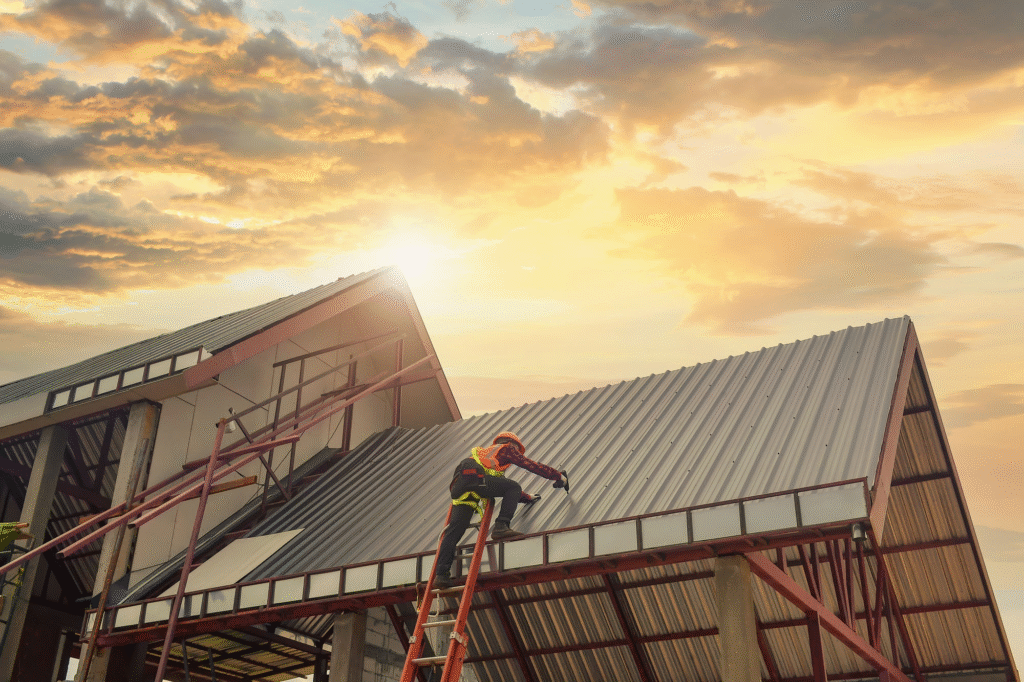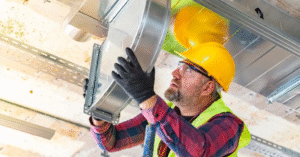Roof Maintenance Tips Every Homeowner Should Know to Avoid Expensive Repairs
5 Common Roofing Problems and How to Prevent Them Before They Cost You
Roofs are like that nice, quiet friend who never makes a fuss, until they do, and then you hear about nothing else. That one little leak can result in a water-stained ceiling, buckled timber, or expensive bill to fix it before you know it. If you reside in a green inner suburb or just along from the ocean, roof maintenance is one of those tasks you can’t leave on the “later” agenda.
Following are five of the most frequent roofing issues Australian house owners experience, along with doable means to prevent them from emptying your pocketbook.

1. Leaks From Damaged or Missing Tiles
The most self-evident, and the most costly if neglected. A missing or broken tile provides rainwater with a straight route into your house. Even a small drip can cause havoc over months, resulting in mould, electricity hazards, and rot in the roof structure.
Prevention tip:
Make a cursory roof inspection every six months, preferably at the start and end of the storm season. You don’t have to get up there, binoculars on the ground or a drone with a camera will suffice. Check for cracked, moved, or discoloured tiles (indicating they contain water). Replace faulty tiles early.
Suburb insight:
In seaside suburbs, such as those many Central Coast Roofers work in, airborne salt accelerates tile wear. Inland suburbs may not have to contend with salt, but high leaf fall from nearby gum trees can hold water and accelerate decay in timber battens below.
2. Blocked Gutters and Downpipes
It doesn’t sound so bad, but clogged gutters can send water rushing back down under your roofline. The water seeps into eaves, fascias, and walls, and in torrential rain, it can pool on your roof.
Prevention tip:
Clean gutters every three months if you live in close proximity to trees, and at least twice a year otherwise. Consider installing gutter guards if leaves are a perpetual battle. For houses in bushfire areas, clean gutters are not all about water damage dry leaf accumulation is also a fire risk.
Anecdote:
One resident I interviewed hadn’t had their gutters cleaned in more than two years. The first summer storm brought water pouring through their lounge room. The clean-up was worth more than a small family car. All because of $0 worth of leaf removal.
3. Rusting Roof Sheets and Flashings
Metals roofs last for decades, but salt, pollution, and repeated damp spots can erode them. The risk with rust is that it propagates silently, you may notice a small area, but below the surface, the corrosion may be much more extensive.
Prevention tip:
Inspect flashings (thin metal coverings surrounding chimneys, vents, and skylights) for rust patches. Clean them and repaint bare metal surfaces when the coating deteriorates. If you’re on the coast, hose your roof with clean water every few months to minimize the accumulation of salt. Central Coast roofers usually suggest Colorbond or other coated steel alternatives for increased corrosion resilience in salty environments.
4. Poor Ventilation and Insulation Problems
A roof space that is not well-ventilated holds heat and moisture. This causes mould, twisted rafters, and even increased energy bills as your home has to work harder to cool it down.
Prevention tip:
Make sure your roof has adequate vents and that insulation is installed correctly — not blocking airflow. In hot climates, ridge vents and whirlybirds can make a massive difference. In cooler areas, focus on keeping moisture out without losing too much heat.
Suburb insight:
Houses in wet, coastal regions require additional ventilation to cope with humidity, while country houses with colder winters might require some compromise between moisture management and retaining heat. It’s just one reason why roofing recommendations in the Inner West could vary from those for houses on the Central Coast.
5. Storm and Tree Damage
Stroms are unpredictable. High winds can tear off tiles, hail can puncture metal roofs, and broken branches can do immense structural damage. Even a small branch scraping due to high winds can cause loosening of tiles over time.
Prevention tip:
Have trees trimmed back from your roof. In case of an impending storm, tie down any loose items outside that can be blown onto your roof. After inclement weather, make a quick visual scan from the ground to look for damage.
Anecdote:
After a Sydney storm one summer, a neighbour discovered a garden chair stuck in their gutter. It had been blown from two houses away. The cost of the repair? Almost $4,000 worth of tiles and guttering.
Comparing Roofing Challenges Across Suburbs
Roofing problems are not a ‘one-size-fits-all’ solution.
- Coastal areas such as Terrigal or Avoca are subject to salt corrosion, high humidity, and higher winds. Stainless-steel fixings and metal roofs last longer in these areas.
- Inland suburbs may shun salt but take a hammering of intense heat and heavy storms, causing expansion and contraction damage to tiles and flashings.
- Heritage suburbs may carry older roof structures requiring meticulous repair to replicate original materials. Replacement pieces can be more difficult to find, and some councils need approval prior to alteration.
A homeowner in the Inner West might be worried about council restrictions on heritage façades. Meanwhile, a homeowner by the coast is more likely to be focused on stopping rust before it starts.
Understanding your suburb’s specific risks makes it easier to choose the right materials, schedule maintenance, and prevent avoidable problems.
DIY vs Professional Maintenance
Some tasks you can do on your own clearing the gutters, pruning branches, or a visual inspection. But repairs to the roof should always be left to the professionals. Traversing a roof in the absence of proper equipment is hazardous, and it’s simple to do more harm than good without intending to.
If you do require professional assistance, schedule inspections prior to storm season. Most trades are overwhelmed with emergency work after the bad weather arrives, so preplanning saves you grief later.
Final Thoughts
Your roof is covering all things underneath it. A little effort now can save you thousands afterwards.
To sum it up:
- Replace broken tiles ahead of time.
- Don’t clog gutters and downpipes.
- Monitor for rust and repaint exposed metal.
- Ventilate your roof space.
- Shield your home from storm and tree damage.
These measures aren’t sexy, but they make your home safe, dry, and repair-bill-free. Inland or coastal, maintenance is the unassuming work that makes you forget your roof is even there — until you most need it.









